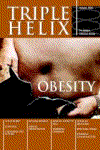On 6 July, the Secretary of State for International Development Hilary Benn (pictured) published a Department for International Development (DFID) position paper on 'sexual and reproductive health and rights'.[1] This sets out what the DFID believe should be done to improve sexual health in the developing world and forms the basis for planning future investment and activities.
The political philosophy permeating the document is borrowed from the United Nations Population Fund (UNFPA) and similar population control groups. It asserts the 'right' to sexual and reproductive health. The language of 'sexual and reproductive rights' means the 'right' to sexual activity with whoever one wishes (whatever age or gender) without causing or receiving harm. There is no mention in the 10,000 word document of any need to support the family based on marriage. There is no acknowledgment of the need for children to be protected from sexual predators or 'educators' whose jobs rely on the very existence of early sexual experimentation. Abstinence is dismissed in a sentence with one reference to a dubious United Nations resource. There is no recognition of the success of an abstinence-based approach of driving down HIV rates in Uganda, or abortion rates and teenage pregnancy rates in the US. There is no moral framework at all behind the assertion of these arbitrary 'rights'.
Scattered through the document are references to 'integrated' HIV and sexual and reproductive health services. This means bringing together surgical abortion, sterilisation, injectable contraception, IUD insertion, maternal and child care and STI treatments in facilities all over the developing world. A series of papers published in 2003 describe underestimation of a substantial iatrogenic component to the spread of HIV in Africa via medical injections and other procedures.[2,3,4,5] According to one estimation over half of HIV infections in adults in Africa could be due to health care exposures. There appears to be a discrepancy between observed HIV prevalence in women undergoing 'reproductive care' and the expected prevalence in such a group from heterosexual transmission alone.[2] Manual vacuum aspiration for example is the commonest method of surgical abortion in Africa. The kits are designed to be used and re-used with virtually no testing done for HIV beforehand.[6]
This document ignores the only successful primary preventive approach to HIV and promotes policies that are inherently dangerous such as integrated HIV-reproductive health clinics. It endorses the UNFPA - purveyor of forced abortion in China - and it undermines the family and marriage. Its determined and myopic ideology is foolishness on a grand scale.
































